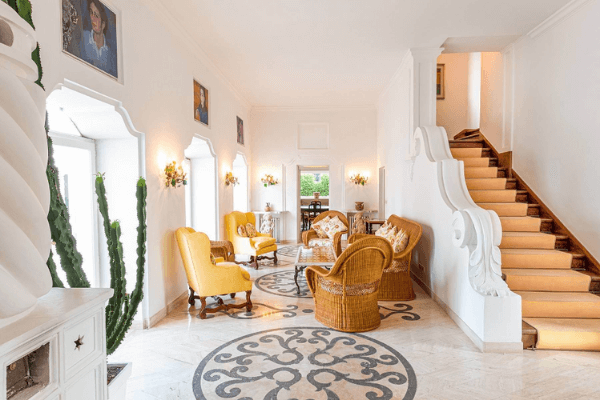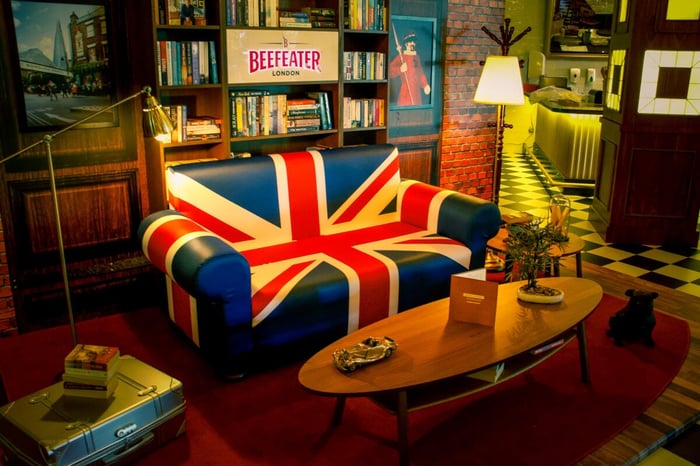Roman interior decor is an interesting mixture of drama and sleek serenity. Romans adorned their homes with rich colors, fabrics, and works of art that were set against straight forward materials such as marble, stone, stucco, and glass surfaces.
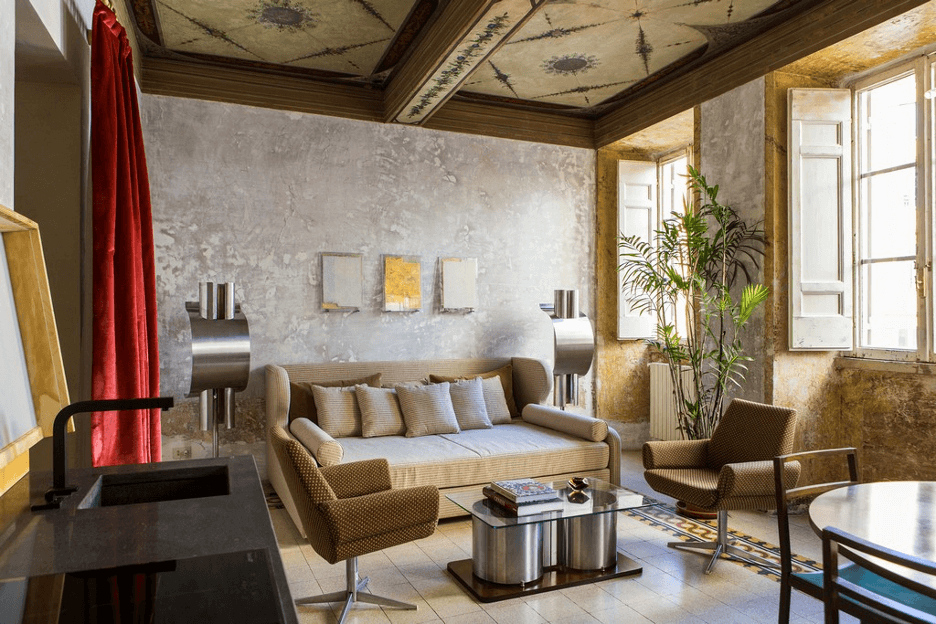 A decor style that literally started centuries ago, Roman interior design has influenced many modern styles throughout the ages. Often when discussing Roman decor, the Georgian period will emerge which had its foundational elements based in Roman and Greek inspired characteristics. This mainly Roman style includes the enduring features of Neoclassical home decor which focuses on elegance, lightness of touch, and sophistication. Roman-inspired elements can be summarized by:
A decor style that literally started centuries ago, Roman interior design has influenced many modern styles throughout the ages. Often when discussing Roman decor, the Georgian period will emerge which had its foundational elements based in Roman and Greek inspired characteristics. This mainly Roman style includes the enduring features of Neoclassical home decor which focuses on elegance, lightness of touch, and sophistication. Roman-inspired elements can be summarized by:
- Classical columns – Corinthian, Ionic, and Doric.
- Figures, shown in profile, and used on plasterwork, vases, and urns. Includes real and imaginary figures: sphinxes, dolphins, satyrs, and griffins.
- Ironwork.
- Marble with shield and urn motifs.
- Motifs: swags, ribbons, garlands, husks, Greek key pattern.
- Niches and alcoves.
- Pastel & bold color schemes.
- Statues depicting Roman gods and goddesses.
- Stonework.
To recreate this look in your home, follow the outline below for the full Roman interior decor style guidelines.
Color: Bold & Rich
The overwhelming choices of color used in the Roman Empire decor were in the palette of strong tones. Colors used depended on which province and period, but we can share the main themes:
- White & black
- Black & red (especially popular)
- Blue & purple
- Burnt ochre, vermilion & yellow
- Pastels: pea-green, mauve & pink
Reverence for nature also came into play with neutral tones in the brown and green color families and then the strong contrasting color combinations above were placed strategically with furniture, rugs, and additional art-inspired accents.
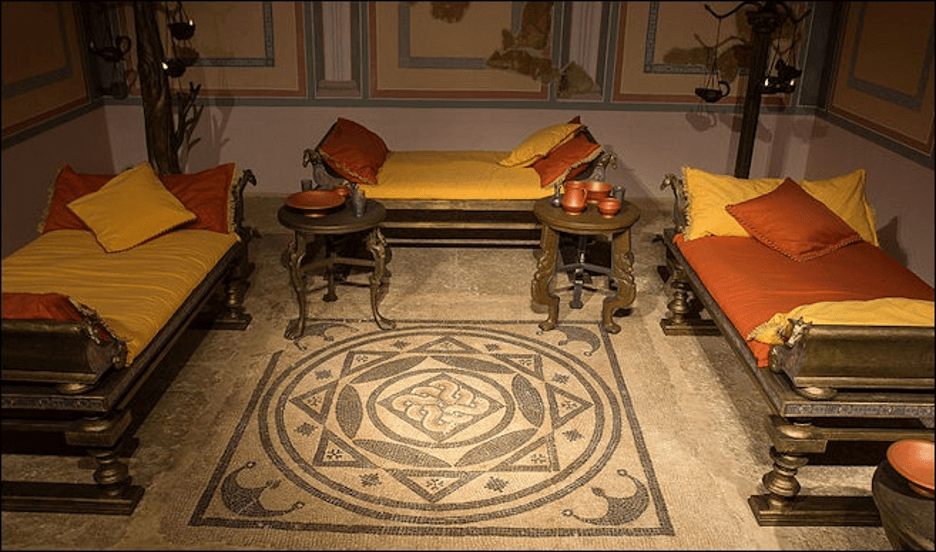 Walls
Walls
Ancient Roman interiors had several different ways of finishing their walls. The main highlights include:
- Realistic renderings
- Large blocks of color
- Stucco finished walls
Do It Yourself:
- Lifelike scene- if you feel artistically inclined, take a hand at painting a section of the wall with a Roman-inspired scene and then gently rub with sandpaper to get that ancient weathered fresco look.
- Color blocks- to update this look a bit, instead of painting large areas of color, go smaller on accent walls or below wooden paneling around a room. Applying a faux concrete finish using a sponge technique is another applicable option too.

Stucco Wall Decor
During Roman times, when stucco was applied to either interior or exterior home surfaces, artists would also create three dimensional figures directly into the walls. These features were then decorated with colors of gold and other jewel shades. You can apply this technique in your home space by adding a Roman motif molded into a room's trim or into the stucco on walls if appropriate.
 Mosaics
Mosaics
This is one element that is easy to identify when building a Roman inspired home, the mosaic. A tessera (plural: tesserae) is an individual tile, usually formed in the shape of a cube, of stone, tile, glass, or other material used in creating a mosaic. Roman’s loved to decorate their residential environments with these decorative patterns. It could be found on the floors, walls, or ceilings. All manner of materials were experimented with, plus a variety of colors. Glass in all shades was used to produce a jewel-like effect.
 Marble
Marble
Using marble as part of your Roman decor is one statement that you almost can’t deny. This was quite a popular material in early Roman homes and temples. Craftsmen of the time combined different colors and varieties of marble slabs to create brilliant patterns for flooring, cornices, and more. The Roman styling injection of marble found its way into many areas of the home:
- Countertops
- Floors
- Tables
- Tiles
- Variety of accessories
 Furniture
Furniture
The Roman home was sparsely furnished, containing only couches, chairs, tables, and a one-off chest here and there. Low couches in groupings of three are one of the distinct Roman furniture arrangements. Generally placed against walls with a central low table in the middle to make the gathering cohesive, and then piled with loads of large stuffed pillows.
 Seating usually came in the form of folding stools, upholstered chairs, and wicker designs. Materials used for furniture in ancient Rome times included:
Seating usually came in the form of folding stools, upholstered chairs, and wicker designs. Materials used for furniture in ancient Rome times included:
- Bronze
- Marble
- Wicker
- Wood

ACCENTS
Tapestry
Although the art of tapestry began in Egypt, this beautiful type of wall hanging found its way into Roman homes centuries ago, and eventually spread throughout the world to many other cultures. These creative wall hangings are made of rich woven materials to create ornate images and designs.

Bronze was quite prevalent in Roman households and definitely a decor element that is characteristic of this interior design style. This metal can be found in a large variety of subject matter, including all of the following:
- Bowls
- Furniture
- Kitchen items
- Mirrors
- Platters
- Tiles
- Trivets for pots
- Statuettes & figurines

Pedestals
The singular column pedestal was ever-present in Roman design. Most likely coming from Greek influence; you can see pedestals in different areas of the home decor. From bathroom sinks to side tables, to stands for holding sculptures around the home.
 Terra Cotta
Terra Cotta
Easily harvested from the earth around Roman cities, terra cotta was an abundant building material that was used in interior and exterior design. Found outside the home in planters and on rooftops, and inside the home in a variety of accessories.
- Containers
- Vessels
- Pottery with relief painting for decorations
- Reliefs on terracotta panels with religious symbols

Sculpture
A Roman inspired home would not be complete without the addition of an artistic sculpture. Topics mainly consisted of portraits, reliefs, and statues portraying emperors and their families as well as high class citizens. Occasionally animals were included as well. Not seen these days, but sculptures in the Roman empire were also painted at times.
Arches & Vaults
Used to create the illusion of depth and space, or even to make an ornate focal point in a room, arches and vaults are part of the Roman design style playbook.
- Vaulted ceilings, adopted from the Etruscans, to enhance the interior of homes/residences.
- Arches in the interior were used to create interesting focal points in large rooms.
- Relief carvings in arches are also common, such as stalks Acanthus leaves, and figures.
- Colors: white and light gray mimicking lime concrete; contrasting colors in rich earth tones can also be used.
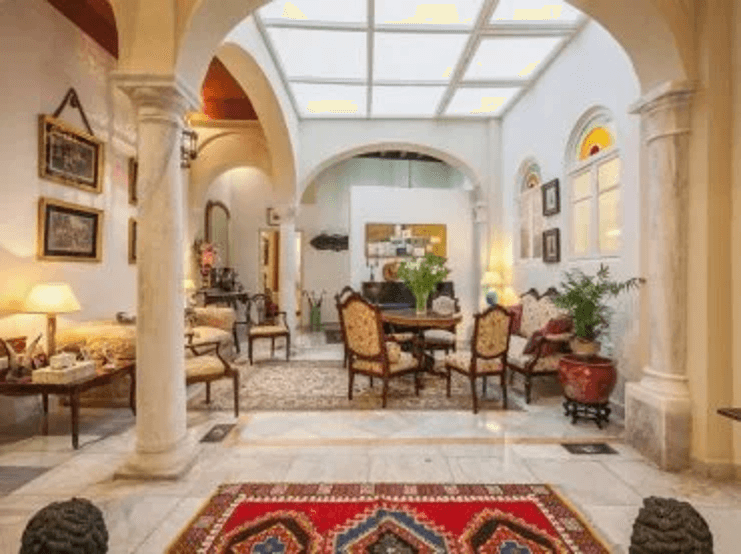
 Miscellaneous Accents
Miscellaneous Accents

- Cherubs: statues, wall sconces, or carved table bases
- Faux concrete statues
- Inlaid wooden boxes
- Large urns
- Mosaic platters
- Plaster busts
- Sundials
- Tall plants

Decor accents to omit if you want to stay authentic to Roman style:
- Clocks
- Display cabinets
- Mirrors
#romanarchitecture #rome #roma #italy #romanempire #roman #italia #ancient #art #romanhistory #france #ancientarchitecture #visitrome #architecturelovers #colosseum #romans #ancientrome #europe #romanruins #georgian #ancientrome #ancienthistory #italy #ancient #archaeology #romanhistory #italia #romanempire #visitrome #anticaroma #romaantica #ancientgreece #arthistory #ancientworld #romeitaly #colosseum #ancientart



